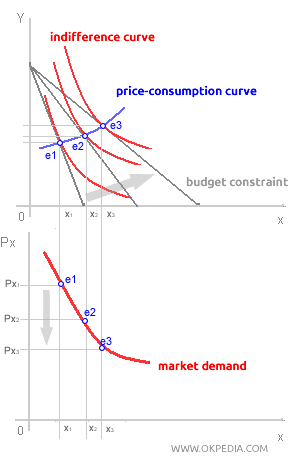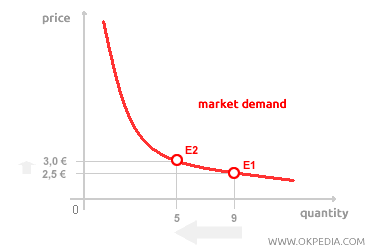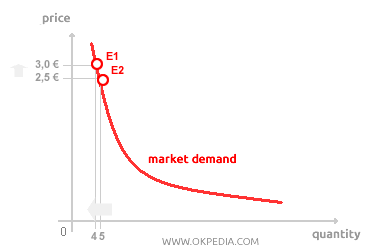Constructing the Demand Curve
The construction of the demand curve is carried out by examining the price-consumption curve. Let’s assume we have two goods (X and Y) and a fixed income, R. The consumer can choose to allocate their income between quantities of good X and good Y.
R = Px Qx + Py Qy
This equation defines the consumer’s budget constraint, represented as a line on a Cartesian graph. The consumer’s optimal choice of goods is where the budget constraint line meets the highest attainable indifference curve, reflecting their preferences. Using the price-consumption curve for goods X and Y, we can determine the optimal quantity of X at varying price points. By plotting these values on the graph below, we construct the demand curve for good X.

When the price of good X decreases from Px1 to Px3, the budget line pivots outward, revealing new equilibrium points (e2) and (e3). This price drop in X prompts the consumer to rethink their initial purchase balance between X and Y. Higher indifference curves signify greater utility, so a rational consumer will aim to reach the highest possible curve. As a consumer increases their consumption of a good (market demand), the additional satisfaction they gain (known as diminishing marginal utility) gradually decreases, making them more willing to exchange larger amounts of X to obtain Y. This trade-off creates a convex-shaped demand curve. For example, if a consumer buys 9 units of X at a price of 2.5 euros each, they are on a part of the demand curve where quantity demanded is highly sensitive to price changes. A price increase from 2.5 to 3.0 euros would significantly reduce the quantity demanded of X because its marginal utility is low. The consumer is willing to give up 4 units of X, as they already have enough and gain little additional benefit from consuming more of it compared to other goods.

On the other hand, if this price increase occurred in the “inelastic” region of the demand curve, the consumer’s reaction would differ. In this initial part of the curve, demand is less responsive to price changes, and the marginal utility of X remains high. The diagram below illustrates this scenario, where the same price increase causes the consumer to reduce their demand by just one unit.

In conclusion. The shape of the demand curve reflects the consumer’s preferences between the good in question and others (e.g., substitute goods, complementary goods). For most goods, the demand curve slopes downward, except for rare cases such as Giffen goods. A non-linear, hyperbolic demand curve is commonly used in economic exercises to represent the combined demand curves of different consumers, while a linear demand curve is often used for simplicity in educational settings.
